My astilbe plants have a special place in my heart because they were first planted back when I did the original landscape with Jams Landscaping in 2006. In the Jams design, the astilbe was planted at the back corner of the house and around the newly built gazebo. Back in the day, I was completely disconnected from the plants that were suggested for the landscape, so I didn’t pay any attention to the color of the astilbe plants in the original installation. For whatever reason, the astilbe at the back corner of the house were red and the plants around the gazebo were white. It was all fine with me as the plan included flowering bushes and shrubs, perennials of all kinds, and the hardscape that provided the structure for the garden, including pavers, hot tubs and decks, gazebos, etc. The color of the astilbe didn’t really register with me at the time.
It's been 18 years since those astilbe plants were installed, and they are still here. That alone makes them worthy of their own blog. The reason they’ve done so well is because I haven’t paid any attention to them, other than to marvel at their colors, over all these years. I didn’t know this until recently, but astilbe have other common names, including tall false-buck’s beard, false goat’s beard, and false spirea. (I know what you’re thinking, and I agree. I don’t know what was/is going on the with the buck’s or the goat’s beard, but somehow someone decided it’s false. How they reached that conclusion is beyond me, so I’ll just call the plants astilbe). There are other reasons the plants have survived for all of these years. First, they are deer resistant. In all this time I can’t think of an occasion where the deer munched on my astilbe plants. Also, the plants are pest resistant, and they thrive in shade as well as sun. It turns out that where we located the gazebo was the one sunny spot in the backyard, and the white astilbe were planted around the gazebo. The end result was red astilbe were planted in the shady back bed (now known as the astilbe bed) and white astilbe were planted around the gazebo, where they got plenty of sun.
I don’t want to get all nostalgic or anything, but I scanned through some old photos and found some pictures of the white astilbe growing around the gazebo. Check this out.
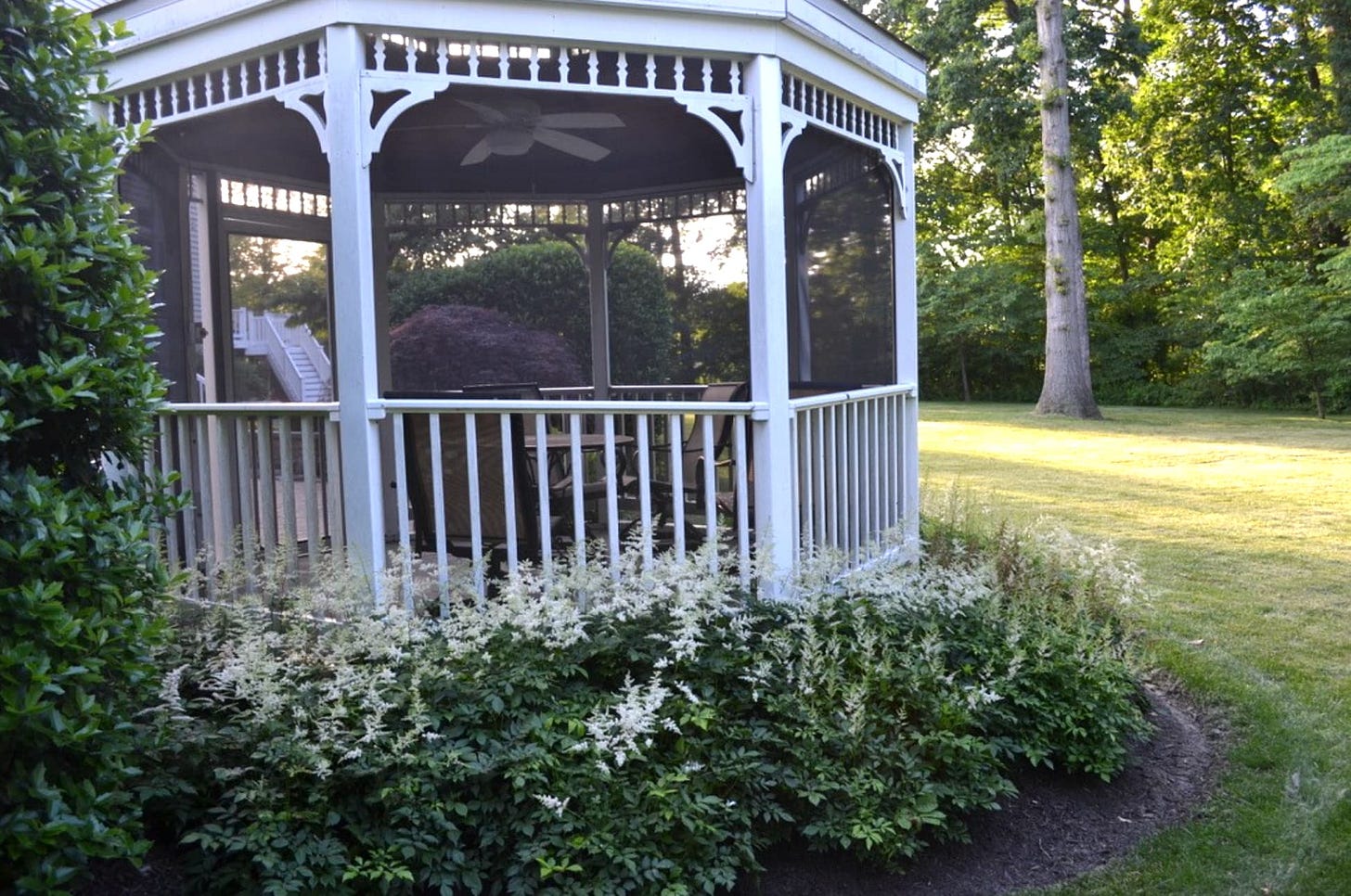
Fast forward to last year, when Linda and I decided to demolish the now slightly cockeyed gazebo and I greedily looked at the space as the one place where I could add a sun bed to my garden. I didn’t want to lose my beautiful white astilbe, so I dug them up and moved the very best of them to the shaded woodland bed under the arborvitae trees behind my driveway. To my surprise, the plants around the gazebo were growing, no, thriving, in soil that is best described as concrete clay. I’ve never seen anything like it. I had to chip the clay off the roots of the plants in order to prepare them to be transplanted. How they could grow in that kind of soil is beyond me.
At or about at the same time, I decided to try my hand at designing a bed on my own, so I drew up a plan for the top of the steps bed, under the crepe myrtle tree. That area of the garden is tricky because of the speckled light, but I figured it safest to install partial shade plants. And what plants did I have on hand that might perfectly fit the bill for partial shade? That’s right: red astilbe from the back of the house in what is now known as the astilbe bed. I moved about 10 red astilbe plants to both sides of the steps garden, eventually planting them under the arborvitae trees as well as near the house under the crepe myrtle.
The result is I now have red and white astilbe plants everywhere I look. They are in the astilbe bed in back of the house, in the woodland area under the arborvitae trees behind the driveway, and on both sides of the steps bed as you enter or exit the garden. To say the least, I am tired of red and white astilbe. It’s interesting to see how they are doing after I transplanted them last year. Almost all of the plants made it through the winter and are still here. If I wasn’t so cheap, I would buy some different color astilbe, which are available in a surprising number of hues, and spread them throughout the garden. I might even (perish the thought) replace a few of the red and white plants with a different color. Heresy! Alas, this will end up being a project for another year.
This is the time of year to fully enjoy the astilbe I have. While the white transplants haven’t set the world on fire in terms of robust flowers this spring, the red plants have met and exceeded all expectations. They start the season with a dark red bloom, explode into a brilliant red color for a couple of weeks, and then go back to dark red before leaving us in the month of August. I made sure to get some photos at the height of the season for you. It never ceases to amaze me how pretty these plants are when they hit full bloom. When you consider that I don’t have to do much maintenance of them all season, they are a worthy addition to the garden.
Stand by for a blizzard of astilbe pictures.
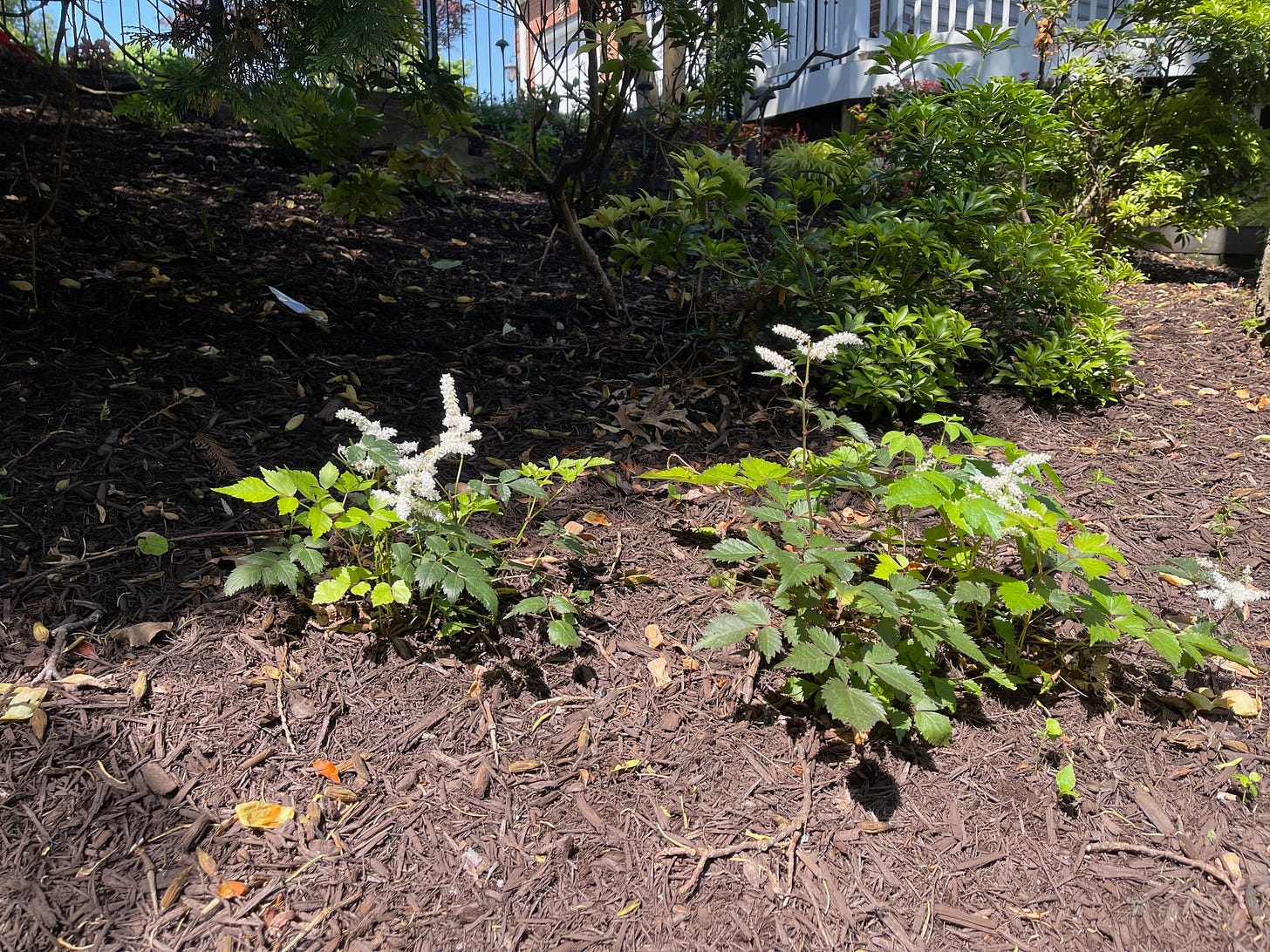

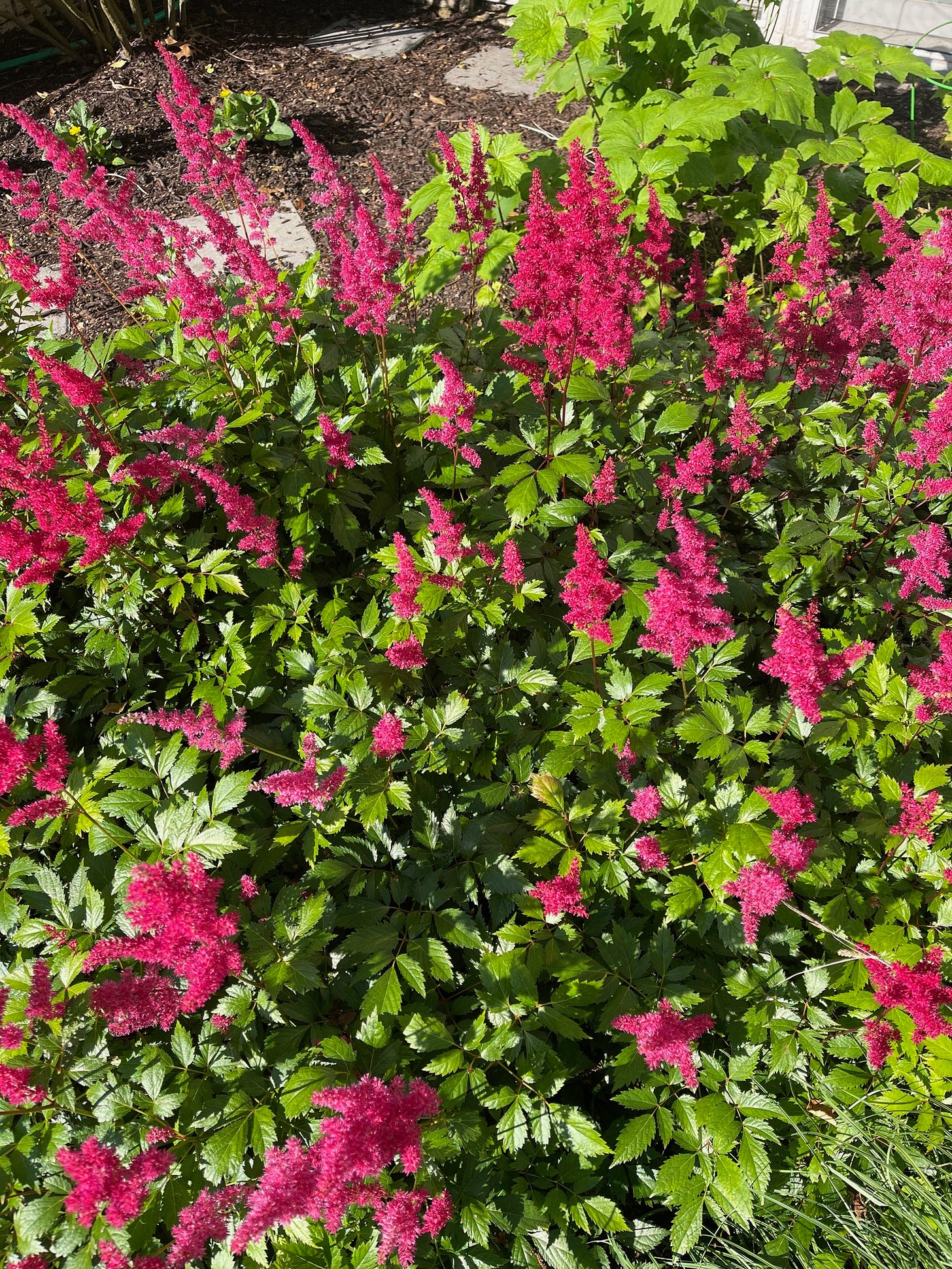
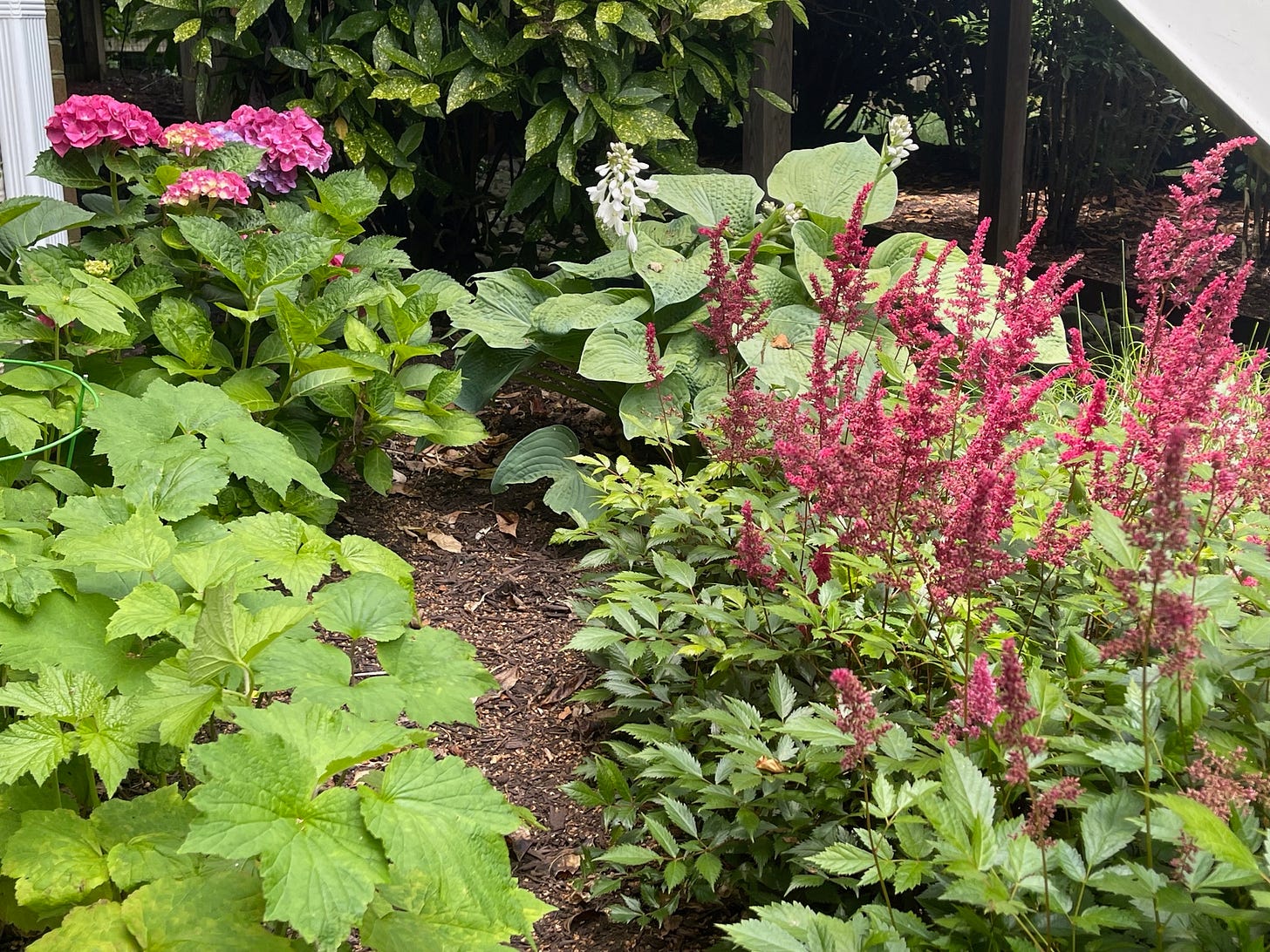
I hope you enjoyed my Ode to Astilbe this week. Next week I think (I hope) that most of my summer flowers will have opened, and I can give you a photo tour of the coneflowers, shasta daisies, yarrow, and other sun worshipping plants in the sun bed. Plus, to my surprise, my research led me to an entirely different type of perennial: ornamental grasses. Plenty to yack about here at The Painful Education of a Type A Gardener.
As always, if you feel like sharing this content you can click on the SHARE button in the text and your friend, associate, family member, or complete stranger can get a link to the blog. Or just send them the link at kensolow@substack.com.
If you are interested in previous posts click on the small images of me at the top of the text and it will take you to the archives.

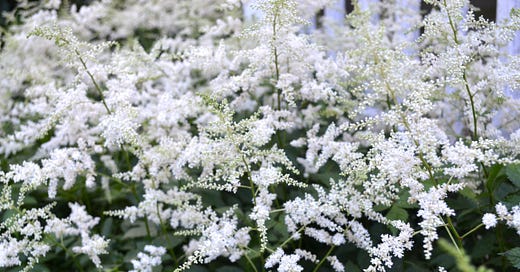



I love your ode to the astilbe. The ones I planted at our house in DE are just getting established. I had lots of astilbe in Bethesda - deer resistant!!! So right.